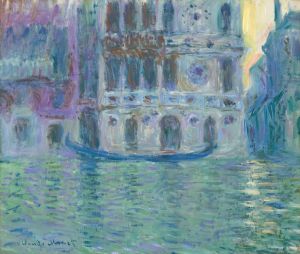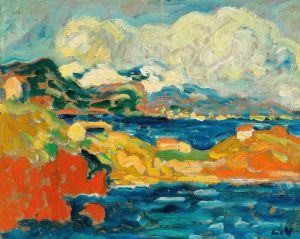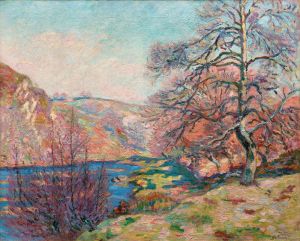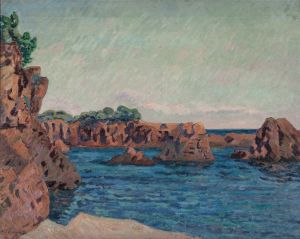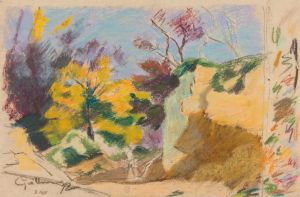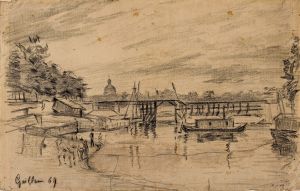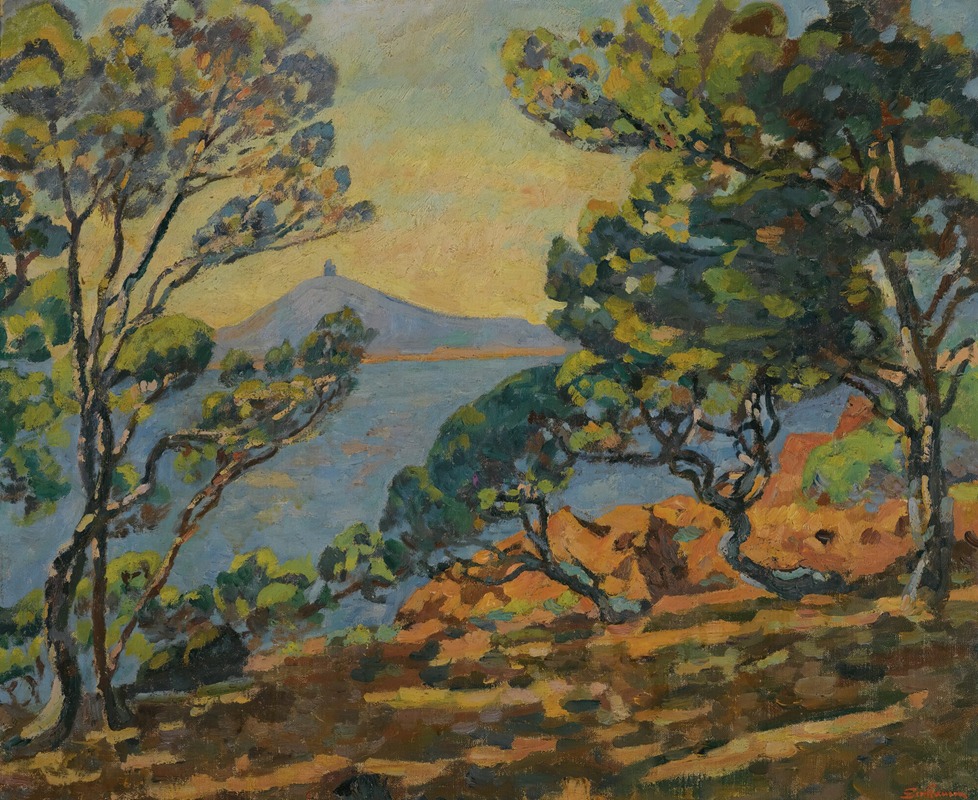
La Baie D’agay Et Le Sémaphore
A hand-painted replica of Armand Guillaumin’s masterpiece La Baie D’agay Et Le Sémaphore, meticulously crafted by professional artists to capture the true essence of the original. Each piece is created with museum-quality canvas and rare mineral pigments, carefully painted by experienced artists with delicate brushstrokes and rich, layered colors to perfectly recreate the texture of the original artwork. Unlike machine-printed reproductions, this hand-painted version brings the painting to life, infused with the artist’s emotions and skill in every stroke. Whether for personal collection or home decoration, it instantly elevates the artistic atmosphere of any space.
Armand Guillaumin was a French impressionist painter known for his vibrant use of color and his depictions of landscapes. Born in Paris in 1841, Guillaumin became associated with the Impressionist movement, which sought to capture the effects of light and atmosphere in their work. Although he was not as widely recognized as some of his contemporaries, such as Claude Monet or Pierre-Auguste Renoir, Guillaumin's contributions to the movement were significant, and his works are appreciated for their bold color and expressive brushwork.
One of Guillaumin's notable works is "La Baie D’Agay Et Le Sémaphore." This painting captures the scenic beauty of the Bay of Agay, located on the Mediterranean coast of France. Agay is a small seaside resort in the commune of Saint-Raphaël, in the Provence-Alpes-Côte d'Azur region. The area is known for its stunning natural landscapes, characterized by the red rocks of the Esterel Massif and the deep blue of the Mediterranean Sea.
In "La Baie D’Agay Et Le Sémaphore," Guillaumin employs his characteristic style, using vibrant colors and dynamic brushstrokes to convey the natural beauty of the scene. The painting likely depicts the bay with its surrounding landscape, including the semaphore, a type of signaling station used for maritime communication. The semaphore would have been an important feature in the coastal landscape during the time Guillaumin painted this work, serving as a navigational aid for ships in the area.
Guillaumin's use of color in this painting is particularly noteworthy. He often employed a vivid palette, using bold contrasts to capture the play of light and shadow. This approach is evident in "La Baie D’Agay Et Le Sémaphore," where the rich blues of the sea contrast with the warm tones of the land and sky. The painting exemplifies Guillaumin's ability to convey the atmosphere and mood of a place through his use of color and composition.
Throughout his career, Guillaumin remained committed to the principles of Impressionism, focusing on landscapes and scenes of everyday life. He participated in several of the Impressionist exhibitions in Paris, gaining recognition for his work. Despite facing financial difficulties for much of his life, Guillaumin continued to paint prolifically, leaving behind a substantial body of work that includes landscapes, cityscapes, and portraits.
"La Baie D’Agay Et Le Sémaphore" is a testament to Guillaumin's skill as a landscape painter and his dedication to capturing the essence of the natural world. The painting reflects his interest in the interplay of light and color, as well as his ability to depict the unique character of a place. Today, Guillaumin's works are held in various public and private collections, and he is remembered as an important figure in the history of Impressionism.
In summary, Armand Guillaumin's "La Baie D’Agay Et Le Sémaphore" is a vibrant depiction of the Bay of Agay, showcasing the artist's mastery of color and light. Through this work, Guillaumin captures the beauty and atmosphere of the Mediterranean landscape, contributing to the rich legacy of the Impressionist movement.






